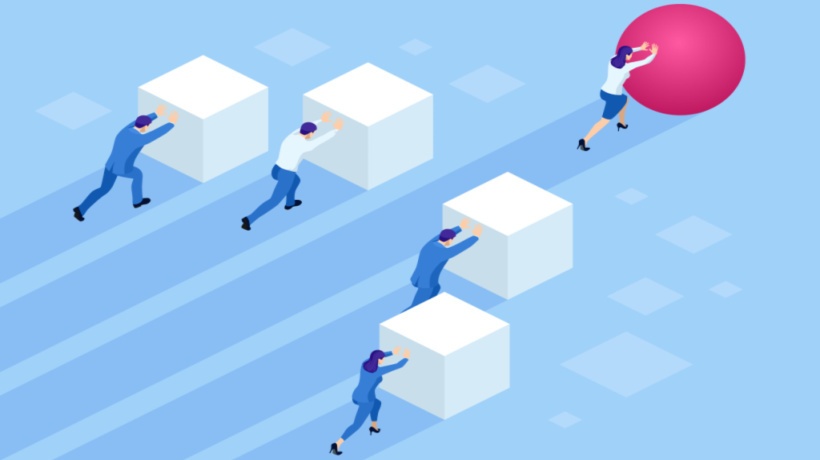Make Onboarding Training Continuous To Benefit Your Employees And Organization
Depending on who you ask (or what Google result you clicked through), there are three to nine stages of employment. Practically speaking, a potential employee shows interest in the position, or maybe your organization seeks them out. Then you interview, recruit, and hire them. They’ll need orientation, and development training to make them better at their jobs. Eventually, they’ll leave, but you want to keep them on your payroll as long as possible. You’ve invested in them, and you’d like to reap the benefits. Continuous L&D can help with retention goals, but what exactly should you do beyond onboarding training? See how continual training is the answer.
5 Innovative Ways To Extend Onboarding Training
1. Host Monthly Events
Today’s generation of workers are more independent and self-aware. ‘Old-school’ workers were more inclined to follow instructions, but the modern employee has questions and wants to hear your reasoning. They have more options, so if you don’t keep them happy, they’ll leave. But even though your staff has issues they’d love to raise, they don’t always know who to ask. Start a tradition of #AMAs where someone in management agrees to respond to staff queries. It can be a ‘town hall’ session in the office boardroom. Or it can be a synchronized teleconferencing session. Staffers can ask extemporaneous questions, but they can also send them in ahead of time. There should be a moderator, but they should focus on time-keeping, not censorship.
2. Launch A Reference Library
Your organization has a distinct idea of what they’d like employees to learn. But on the ground, your staff may have a different set of needs. For example, the boss prefers everyone to memorize the corporate mission and vision. But employees know – especially during their first week – they were more worried about pronouncing the boss’ name right. Or deciphering how to address them. (First name? Last name? Title? Nickname? Vague mumbling with no eye contact?) So, while the higher ups control the online training curriculum, create a crowd-sourced JIT library populated by staff members. They’re better placed to recognize and provide emergency training aides. And they’re best positioned to put it in a format that’s accessible to new hires. Just make sure your LMS or authoring tool is simple enough to be used by non-IT staffers. And that it’s accessible on mobile, both for corporate learners and online training content developers.
3. Craft Individual Career Journeys
Almost every interviewer asks, ‘Where do you see yourself on 5 years?’ Take it out of the abstract. As part of your new hire’s onboarding, show them potential career paths, giving the job title and qualifications. It’s an excellent tool to create and disseminate digitally, because both the corporate learners and their managers can update it. And it can be consistently upgraded over the years. When they first begin their new hire training, it will have an organizational chart, but with job descriptions rather than names. So rather than thinking ‘I want so-and-so’s job’, the corporate learners can see what positions speak to them. They can also see what qualifications they require to get there. Include a list of online training courses they should take and abilities they should acquire if they want that position. And each time they advance (or change their minds and switch paths), it will be recorded on the employee online training career chart.
4. Long-Term Gamification
Launch a gamification strategy that extends far beyond the onboarding training process. During new hire training, employees are introduced to the badges, points, and/or leaderboards. Give them an explanation of what’s involved, how they can progress (or earn), and the real-world benefits. Throughout the months and years that they work within your organization, they’ll accumulate points that fuel their motivation. Which also gives them the opportunity to see how far they’ve come since the beginning. You can even include an interactive map or game board to give them a visual reminder of which goals they’ve achieved. As well as the goals that still lie ahead.
5. Create Positions As Needed
It’s difficult for employees in senior positions to move around the corporate space. Unless they get poached (or unless their boss leaves), there’s not much room for growth. This happens within organizations too – staffers could find themselves being VPs for life. It’s what makes them listless, and they might leave your company just for a higher position. To give employees a sense of upward movement at every stage in their careers, diversify.
Follow up on the training path they chose when they first started. And if you need to, create new L&D-based job titles for them. Make it meaningful, genuine, and customized. For example, an accounts intern who loves photography could become the company training archivist. S/he continues with her/his finance duties, but the new role allows her/him to apply her/his passion to enrich the training experience for others. You can also invite experienced employees to take on the role of mentors and/or peer-based coaches.
Conclusion
Human beings need to feel we’re moving forward in life. If we stagnate, we feel unfulfilled, and our sense of under-achievement may put us back on the job market. So as an organization, you want to push past onboarding training and provide consistent support at all stages of the job. Examples? Monthly sessions where everyone – newbies and office vets – can ask questions (and have them answered honestly). A reference library populated by employees. Career paths created on Day 1 and meaningfully updated throughout their time at your firm. And if there’s no room for upward movement, design new positions tailored for specific high-impact corporate learners, to keep them happy.
Does your LMS allow you to extend onboarding training into every stage of the employment cycle? Find the best employee training platform for your organization by using our online directory. Filter results by features, pricing model, and deployment type to improve ROI and add overlooked solutions to your list.







